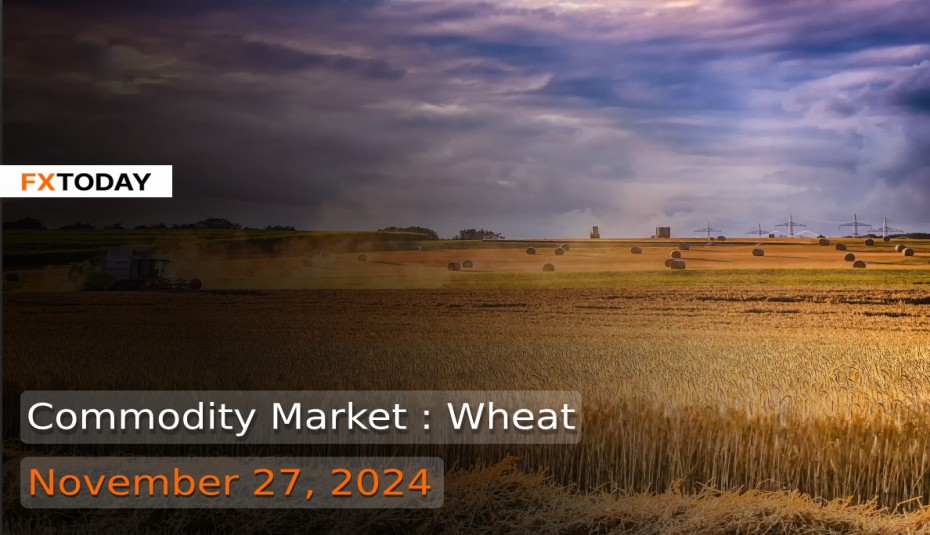Global Wheat Market Faces Oversupply, U.S. Winter Wheat Outlook Improves
The global wheat market is grappling with oversupply and evolving trade dynamics, creating challenges and opportunities for producers and traders. Southern hemisphere harvests, particularly in Australia and Argentina, are flooding the market, pressuring wheat futures downward. Despite this, the U.S. winter wheat outlook has brightened significantly due to abundant rainfall in drought-affected regions of the Plains and Midwest, boosting crop conditions to the highest ratings in years.
The USDA's 2024/25 forecast anticipates larger domestic supplies, driven by increased imports and food use, with ending stocks rising 17% from the previous year. However, export levels remain stagnant, limiting broader U.S. market gains.
Globally, wheat production is projected to grow slightly, with Kazakhstan’s record-breaking harvest balancing reductions in Argentina, Russia, and the EU. Russia’s wheat exports face further decline amid anticipated export quotas, tightening global availability. EU wheat exports have plummeted by 30% this season, constrained by incomplete data and heightened competition from Black Sea suppliers. Meanwhile, favorable weather across Europe has allowed farmers to advance winter sowing, which could shape future supply scenarios.
In the Middle East, Jordan’s recent purchase of 60,000 tons of wheat underscores steady demand in some regions, with further tenders signaling ongoing trade activity. These dynamics reveal a bifurcated market: while ample supplies depress prices, localized demand, weather-driven production shifts, and geopolitical factors could reconfigure trade flows.
Wheat prices have risen modestly due to logistical disruptions stemming from the Russia-Ukraine conflict, with Ukraine's capability to strike inside Russian territory delaying Black Sea shipping and increasing grain transport costs by $3–4 per ton. Despite this, bearish trends continue to dominate wheat markets. Speculative fund activity reflects cautious repositioning, as funds buy wheat while trimming positions in corn and soybeans. Meanwhile, in the U.K., wheat futures are under pressure from a strong euro and weak export demand, even as farmers increase winter wheat planting for 2025.
Elsewhere, wheat prices on the Chicago Board of Trade (CBOT) remain under pressure from ample harvests in the southern hemisphere, particularly in Australia. Improved U.S. winter wheat crop conditions, with 55% rated good to excellent, and steady planting progress further bolster supply prospects. Export activity has also surged, with U.S. wheat shipments up 83% week-on-week and 25% year-on-year, driven by increased demand from Japan and the Philippines.
Resistance for March Chicago wheat futures at 574 1/2–577 1/2 remains a significant obstacle, with sustained closes above this range required to establish a higher high and indicate a meaningful recovery. In terms of market dynamics, implied volatility decreased as the Wheat Volatility Index (WVL) dropped by 0.64 to reach a one-week low of 27.48. Conversely, 30-day historical volatility increased slightly by 0.27% to 24.36. These changes highlight a mixed sentiment in the wheat market, with traders focusing closely on both resistance levels and evolving volatility trends.
Data for Technical Analysis (1H) CFD US Wheat Futures - Mar 25 (ZWH5)
Resistance : 555.25, 555.52, 555.95
Support : 554.39, 554.12, 553.69
1H Outlook
Source: TradingView
Buy/Long 1 If the support at the price range 552.39 - 554.39 is touched, but the support at 554.39 cannot be broken, the TP may be set around 555.52 and the SL around 551.39, or up to the risk appetite.
Buy/Long 2 If the resistance can be broken at the price range of 555.25 - 557.25, TP may be set around 558.40 and SL around 553.39, or up to the risk appetite.
Sell/Short 1 If the resistance at the price range 555.25 - 557.25 is touched, but the resistance 555.25 cannot be broken, the TP may be set around 554.39 and the SL around 558.25, or up to the risk appetite.
Sell/Short 2 If the support can be broken at the price range of 552.39 - 554.39, TP may be set around 551.60 and SL around 556.25, or up to the risk appetite.
Pivot Points Nov 27, 2024 07:00AM GMT
|
Name
|
S3
|
S2
|
S1
|
Pivot Points
|
R1
|
R2
|
R3
|
|---|---|---|---|---|---|---|---|
| Classic | 553.26 | 553.69 | 554.39 | 554.82 | 555.52 | 555.95 | 556.65 |
| Fibonacci | 553.69 | 554.12 | 554.39 | 554.82 | 555.25 | 555.52 | 555.95 |
| Camarilla | 554.79 | 554.89 | 555 | 554.82 | 555.2 | 555.31 | 555.41 |
| Woodie's | 553.4 | 553.76 | 554.53 | 554.89 | 555.66 | 556.02 | 556.79 |
| DeMark's | - | - | 554.61 | 554.93 | 555.74 | - | - |
Sources: Progressive Farmer, Barchart
















